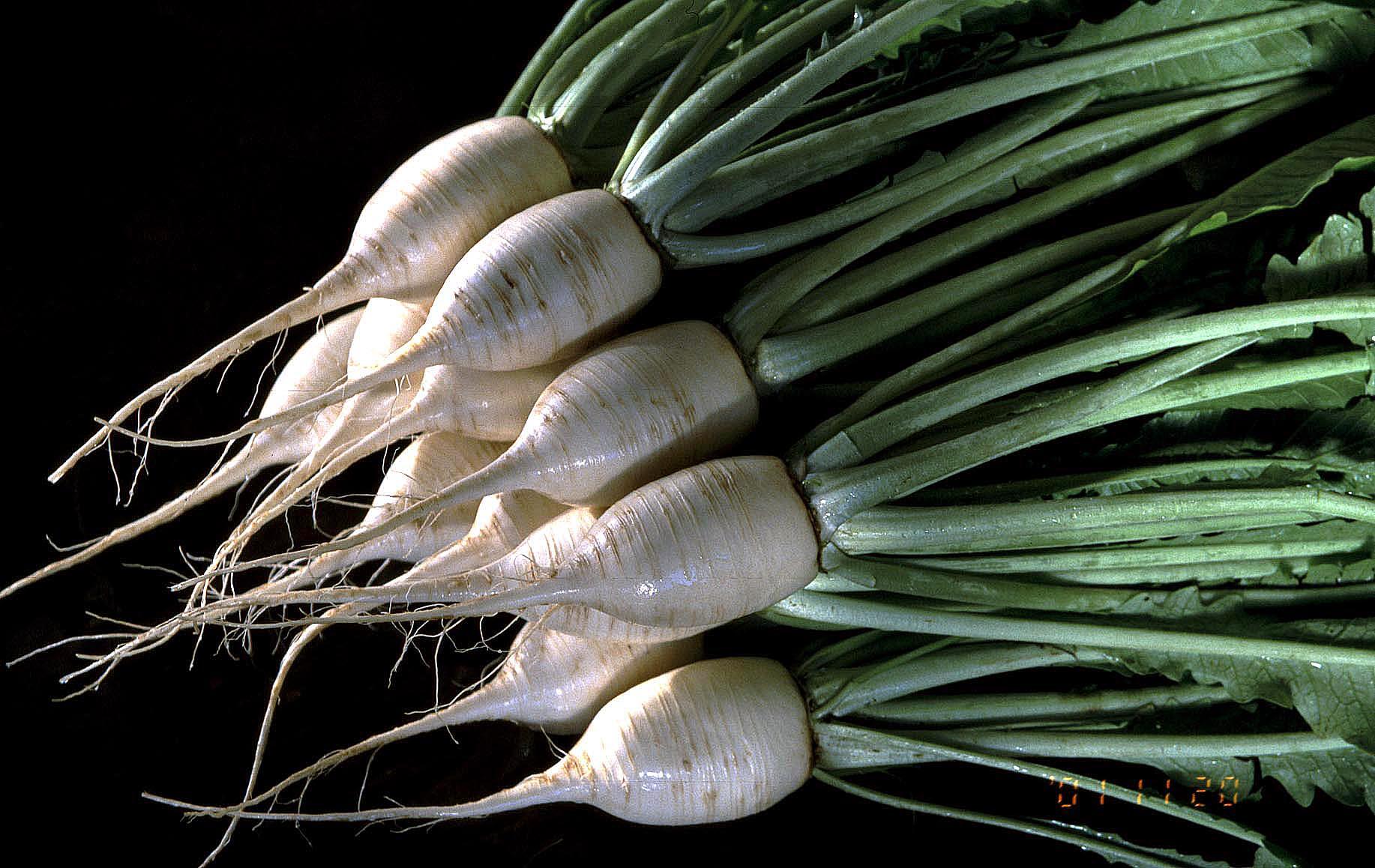Matsudate Shibori Daikon
| Registration Number | 60 |
|---|---|
| Name of the GI | Matsudate Shibori Daikon |
| Class | Vegetables/ Cereal grains/Pulses |
| Date of Protection | 2018/04/09 |
| Producing Area |
Akita Prefecture
Matsudate, Hachimantai, Kazuno City, Akita Prefecture |
| Applicant - Name and Address | Matsudate Shibori Daikon Cultivation Cooperative 28 Matsudate, Hachimantai, Kazuno City, Akita Prefecture |
Producing Area
Matsudate Shibori Daikon is a native karami daikon (pungent radish) grown traditionally in Matsudate area, Kazuno City, Akita Prefecture.
It is slightly round and wedge-shaped, and is one of the larger varieties among karami daikons produced in Japan. Its low water content and firm flesh can keep Matsudate Shibori Daikon fresher and make shelf life longer.
Matsudate Shibori Daikon is grated and squeezed, and its juice is used as a condiment and dipping sauce for a variety of dishes such as soba, udon, hotpots (e.g. boiled tofu, kaiyaki (1)), and sashimi.
In addition to its pungent flavor, which is one of the strongest among native karami daikons, Matsudate Shibori Daikon also has a higher sucrose content compared to other karami daikon, adding sweetness to the flavor. This gives Matsudate Shibori Daikon the flavor that is distinct from other varieties.
Due to its unique taste, Matsudate Shibori Daikon is traded at higher prices than those of ordinary daikons in the local market.
Matsudate Shibori Daikon is cultivated in the producing area, Matsudate, using the variety Akita Onishibori selected from native strain.
The producing area is hilly and surrounded by mountains, and is characterized by cold climate with large temperature differences between day and night due to its topographic features. This climate is suitable for growing Matsudate Shibori Daikon, because it is sensitive to heat and its flavor becomes stronger under greater diurnal temperature ranges.
Matsudate Shibori Daikon is a relatively large size, and has not only a pungent flavor but also a high sucrose content. These characters are attributed to the selection of strains that are resistant to cold temperatures as well as freezing and less prone to cracking before harvesting, under the topographic and climate conditions characterized by cold winds blowing down from the surrounding mountains and early frost.
Matsudate Shibori Daikon has been grown in the area, a mining region, for more than 100 years as a cash crop during the winter months. As a local vegetable grown in small quantities, and consumed mostly within the area, Matsudate Shibori Daikon had remained little known for a long time.
In 1980, the Matsudate Shibori Daikon Production Group (the current Matsudate Shibori Daikon Cultivation Cooperative) was formed, launching efforts toward production and sales of Matsudate Shibori Daikon as a local specialty. Thereafter, Matsudate Shibori Daikon became known outside of the area.
- Kaiyaki: A local dish prepared by simmering seafood and vegetables using shells of scallops or other shellfish instead of a pot.


